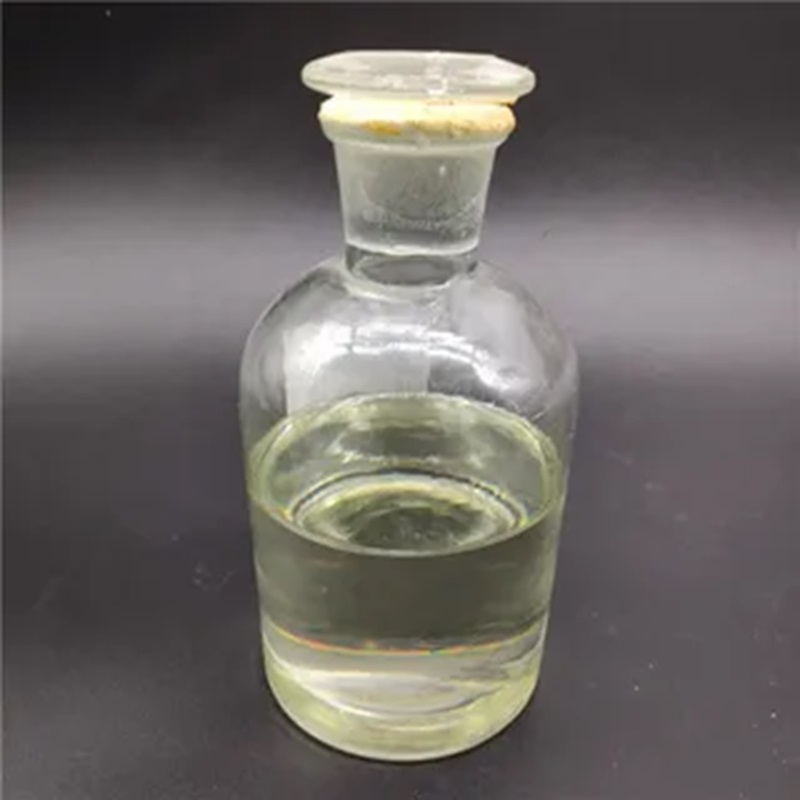We unleash your business potential by maximize the business innovation.
Send EmailTri Isobutyl Phosphate, Tri-isobutyl Phosphate, TIBP, Isobutyl Phosphate, 126-71-6
CAS: 126-71-6
Molecular Formula: C12H27O4P
Names and Identifiers
| Name | tri-isobutyl phosphate |
| Synonyms | TIBP isobutylphosphate Isobutyl phosphate Triisobutylphosphat TRIISOBUTYL PHOSPHATE TRIS-ISOBUTYLPHOSPHATE tri-isobutyl phosphate tri isobutyl phosphate Tris(2-methylpropyl) phosphate tris(2-methylpropyl) phosphate PHOSPHORIC ACID TRIISOBUTYL ESTER Phosphoricacid,tris(2-methylpropyl)ester |
| CAS | 126-71-6 |
| EINECS | 204-798-3 |
| InChI | InChI=1/C12H27O4P/c1-10(2)7-14-17(13,15-8-11(3)4)16-9-12(5)6/h10-12H,7-9H2,1-6H3 |
| InChIKey | HRKAMJBPFPHCSD-UHFFFAOYSA-N |
Physico-chemical Properties
| Molecular Formula | C12H27O4P |
| Molar Mass | 266.31 |
| Density | 0.965g/mLat 20°C(lit.) |
| Melting Point | 150℃ |
| Boling Point | ~205°C(lit.) |
| Flash Point | 150°C |
| Water Solubility | 264mg/L at 25℃ |
| Solubility | 0.26g/l |
| Vapor Presure | 0.002 hPa (20 °C) |
| Appearance | Transparent liquid |
| Color | Colourless |
| Storage Condition | Store below +30°C. |
| Refractive Index | n20/D 1.420 |
| MDL | MFCD00039849 |
| Use | Used as textile auxiliaries, penetrants, dye auxiliaries, etc |
Risk and Safety
| Hazard Symbols | Xi - Irritant |
| Risk Codes | 43 - May cause sensitization by skin contact |
| Safety Description | 36/37 - Wear suitable protective clothing and gloves. |
| WGK Germany | 1 |
| RTECS | TC9300000 |
| HS Code | 2919 90 00 |
| Toxicity | LD50 orally in Rabbit: > 5000 mg/kg LD50 dermal Rabbit > 5000 mg/kg |
safety
There is a risk of combustion in contact with high heat, open flames, or oxidants. Thermal decomposition produces highly toxic phosphorus oxide smoke. The combustion (decomposition) products include carbon monoxide, carbon dioxide, phosphorus oxide, and phosphane. Store in a dry and ventilated place.
Add isobutanol to the reactor and cool it with ice salt water. Slowly add phosphorus oxychloride (the molar ratio of isobutanol to phosphorus oxychloride is 1.0:3.9) under stirring, control the reaction temperature not to exceed 20 ℃, and after the addition is completed, raise the temperature to 6570 ℃. Continue the reaction under reduced pressure for 3-4 hours, and perform vacuum distillation to recover the excess alcohol and hydrogen chloride azeotropic mixture for reuse. After washing and drying, the crude product is subjected to vacuum distillation, and a fraction of 119~120 ℃/1.067kPa is collected. The recovery rate of triisobutyl phosphate is higher than 85%, with a purity of over 99%.
Nature
| boiling point | ~205 °C(lit.) |
| density | 0.965 g/mL at 20 °C(lit.) |
| Vapor pressure | 0.002 hPa (20 °C) |
| refractive index | n20/D 1.420 |
| flash point | 150 °C |
| storage conditions | Store below 30°C. |
| solubility | 0.26g/l |
| InChIKey | HRKAMJBPFPHCSD-UHFFFAOYSA-N |
Reference Information
| LogP | 3.72 at 25℃ |
| use | used as textile auxiliaries, penetrants, dye auxiliaries, etc. this product is mainly used as defoamer and penetrant. Widely used in ink, construction, oil field additives and other industries and fields, but also used as textile additives, dye additives and so on. |
| spontaneous combustion temperature | 430°C DIN 51794 |
Security information
| dangerous goods mark | Xi |
| hazard category code | 43 |
| safety instructions | 36/37 |
| WGK Germany | 1 |
| RTECS number | TC9300000 |
| auto-ignition temperature | 430°C DIN 51794 |
| customs code | 2919 90 00 |
| Toxicity | LD50 orally in Rabbit: > 5000 mg/kg LD50 dermal Rabbit > 5000 mg/kg |
Use
- used as textile auxiliaries, penetrants, dye auxiliaries, etc.
- this product is mainly used as defoamer and penetrant. Widely used in ink, construction, oil field additives and other industries and fields, but also used as textile additives, dye additives and so on.
